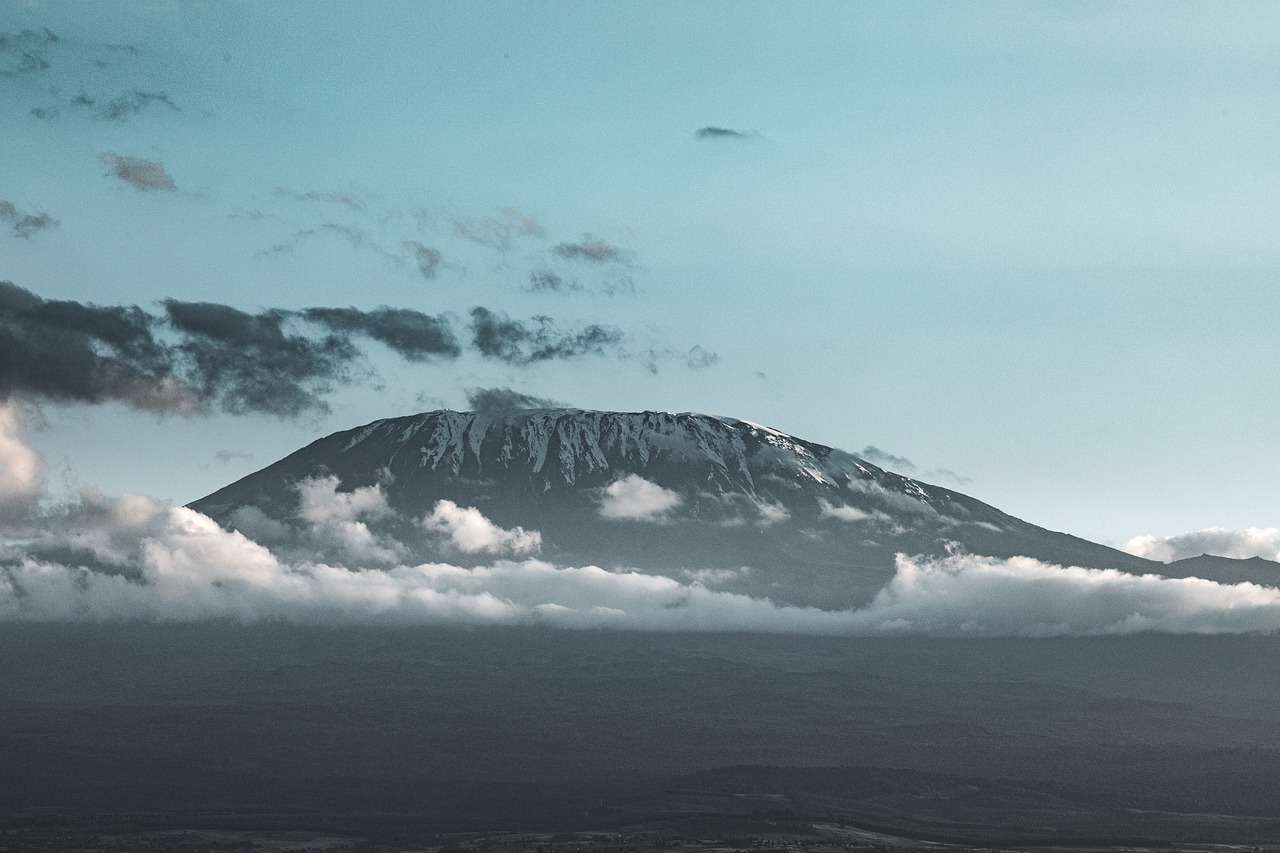
Mount Kilimanjaro: Africa’s Majestic Summit
Mount Kilimanjaro, towering at 5,895 meters (19,341 feet), is not only Africa’s highest peak but also the world’s tallest free-standing mountain. Situated in northeastern Tanzania, Kilimanjaro is a popular destination for adventurers and nature lovers, offering a unique blend of breathtaking landscapes, diverse ecosystems, and cultural richness. Known as the “Roof of Africa,” this iconic mountain attracts thousands of climbers each year, all eager to conquer its majestic summit.
A Geological Marvel
Mount Kilimanjaro is a dormant stratovolcano with three distinct volcanic cones: Kibo, Mawenzi, and Shira. Kibo, the tallest and most famous of the cones, is home to Uhuru Peak, the highest point on the mountain. The dramatic snow-capped summit, often visible from miles away, is a stunning sight that stands in stark contrast to the surrounding savannas.
Diverse Ecosystems
Kilimanjaro’s slopes are a mosaic of diverse ecosystems, each with its own unique flora and fauna. As climbers ascend, they pass through five distinct climatic zones:
Cultivation Zone: The lower slopes are characterized by farmlands and villages, where crops such as coffee and bananas are grown.
Rainforest Zone: Lush, dense forests teeming with wildlife, including monkeys, elephants, and a variety of bird species.
Heath and Moorland Zone: A landscape of heathers, grasses, and wildflowers, offering stunning views of the mountain.
Alpine Desert Zone: A barren, rocky terrain with sparse vegetation and dramatic views of the surrounding landscape.
Arctic Zone: The icy summit, with glaciers and snowfields, presents a stark, otherworldly beauty.
Climbing Kilimanjaro
Climbing Mount Kilimanjaro is a dream for many adventurers. The mountain offers several routes to the summit, each with varying levels of difficulty, scenery, and duration. The most popular routes include:
Marangu Route: Known as the “Coca-Cola” route, it is the most straightforward and offers hut accommodations.
Machame Route: The “Whiskey” route is more challenging but offers diverse scenery and is popular among experienced climbers.
Lemosho Route: A longer, more scenic route that provides excellent acclimatization opportunities.
Climbing Kilimanjaro requires no technical climbing skills, but it is a physically demanding trek that requires preparation and acclimatization to altitude.
Cultural Significance
Mount Kilimanjaro holds cultural and spiritual significance for the local Chagga people, who live on its slopes. They regard the mountain as sacred and have many legends and traditions associated with it. Visitors can learn about the local culture and history by interacting with the Chagga community and exploring nearby villages and cultural centers.
Conservation and Sustainability
Conservation efforts are crucial to preserving Kilimanjaro’s unique ecosystems and glaciers, which are threatened by climate change and human activity. Sustainable tourism practices are encouraged, with initiatives in place to minimize environmental impact and support local communities.
Conclusion
Mount Kilimanjaro is more than just a mountain; it is a symbol of Africa’s natural beauty and cultural richness. Whether you are an experienced climber or a nature enthusiast, the journey to its summit offers an unparalleled adventure, showcasing the incredible diversity of landscapes and life. Standing atop Uhuru Peak, gazing over the vast plains of Africa, is an experience that leaves a lasting impression and a deep appreciation for this majestic wonder.
Book Now
Contact Us
-
Phone Number
+255742054864 -
Email Address
info@afriquestsafaris.co.tz -
Street Address
Kinondoni, Dar es salaam, Tanzania